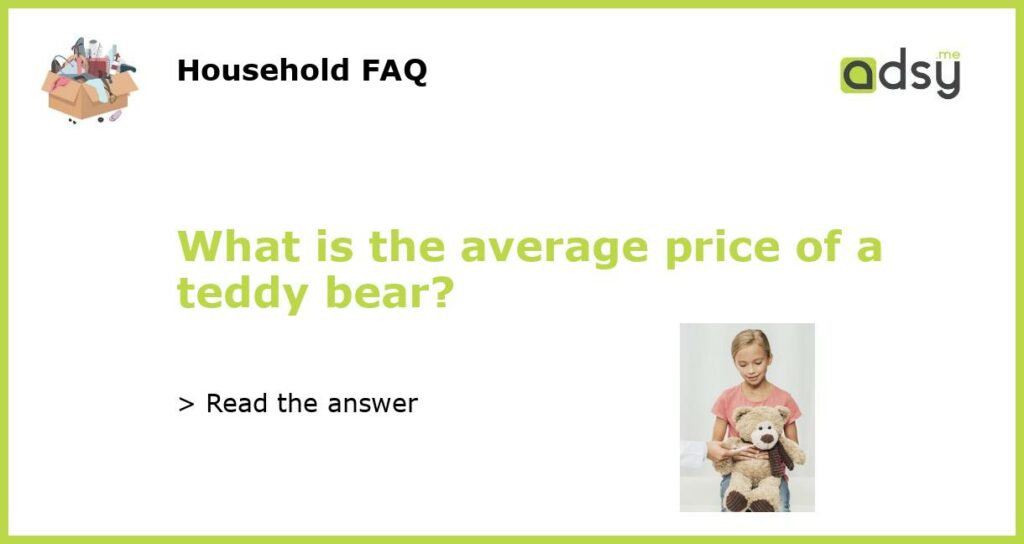The Average Price of a Teddy Bear: Factors that Influence the Cost
When it comes to teddy bears, there is a wide range of prices available. The average price of a teddy bear depends on several factors, including the quality of materials, brand reputation, and size. Let’s take a closer look at these factors to understand why teddy bear prices can vary so much.
Quality of Materials
The quality of materials used in the production of a teddy bear can greatly influence its price. Higher-quality materials, such as soft and durable fabrics, will inevitably cost more. Teddy bears made from premium materials are more likely to have superior craftsmanship, making them more expensive.
Many high-end teddy bears are made from materials like organic cotton, mohair, or alpaca fur. These natural fibers offer a luxurious feel and are often sourced from sustainable and ethical suppliers. Teddy bears made from synthetic fabrics, on the other hand, tend to be more affordable.
Brand Reputation
The reputation of the brand also plays a significant role in determining the price of a teddy bear. Well-known brands often command higher prices due to their popularity and customer trust. These brands have typically built a reputation for quality and durability over time.
Customers are willing to pay a premium for teddy bears from established brands because they have confidence in the product’s reliability. These brands also tend to provide better customer service and offer warranties or guarantees, which can contribute to the higher price tag.
Size Matters
The size of a teddy bear is another factor that affects its price. Smaller teddy bears are usually less expensive compared to their larger counterparts. This is because smaller bears require fewer materials and are less labor-intensive to produce.
However, there are exceptions to this rule. Giant teddy bears, sometimes measuring as tall as a human, can be quite expensive due to their size. These oversized bears often become novelty items or coveted gifts, resulting in higher prices.
Special Features and Collectibility
Some teddy bears offer unique features or designs that drive up their price. Limited edition bears, for example, are often produced in limited quantities, making them highly collectible. These bears can become valuable investments over time, fetching high prices in the secondary market.
Teddy bears with interactive features, such as built-in voice recorders or motion sensors, also tend to be pricier. These additional functionalities require more advanced engineering and technology, contributing to the higher cost.
Market Demand and Supply
Market dynamics, including supply and demand, can also influence the average price of a teddy bear. During peak seasons like Christmas or Valentine’s Day, the demand for teddy bears increases, leading to higher prices. On the other hand, off-peak seasons may see lower prices as retailers try to clear out inventory.
The cost of a teddy bear can also be affected by factors such as location and competition. Different regions or countries may have varying pricing due to factors like import/export costs or local manufacturing rates. Competition between retailers can also lead to price fluctuations, with some offering discounts or sales to attract customers.
In conclusion, the average price of a teddy bear can vary significantly depending on factors such as the quality of materials, brand reputation, size, special features, and market dynamics. As a consumer, it is important to consider these factors and determine which aspects are most important to you before making a purchase decision.






